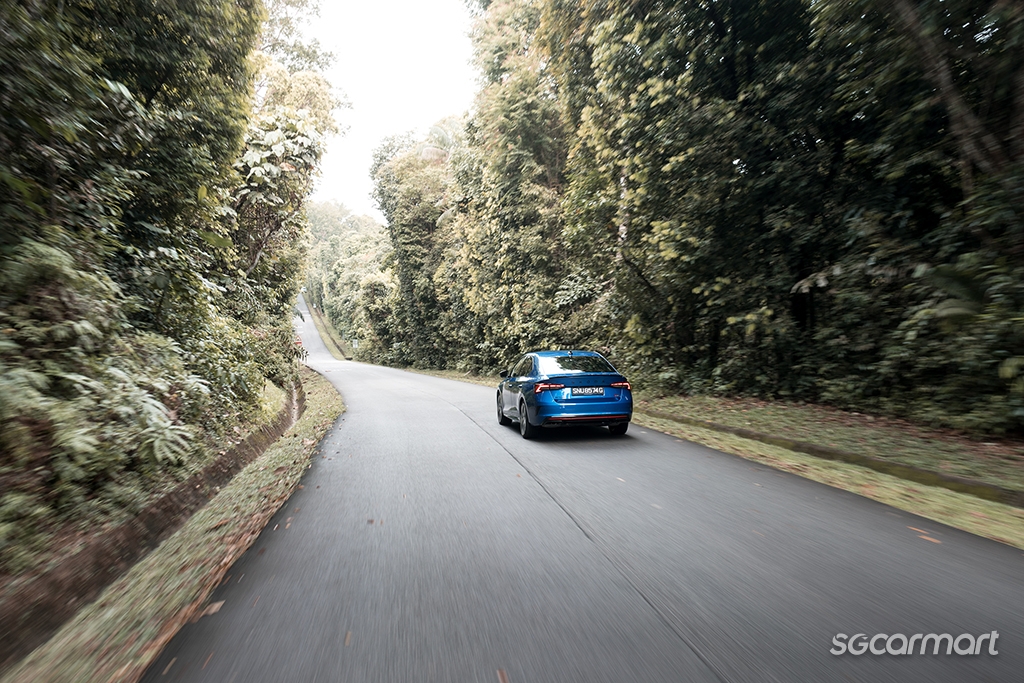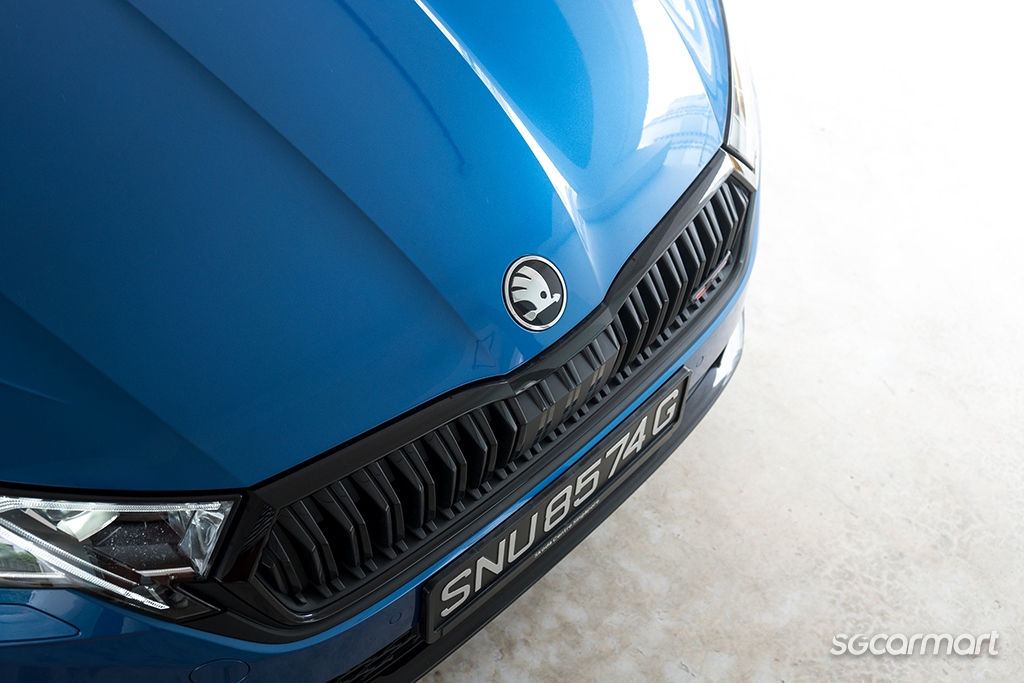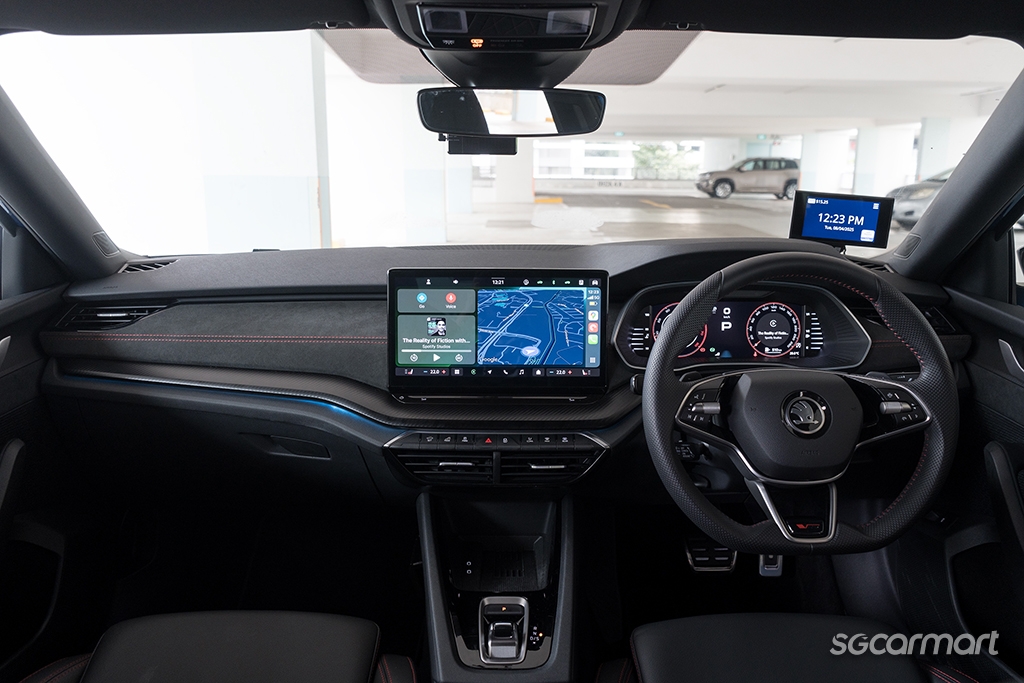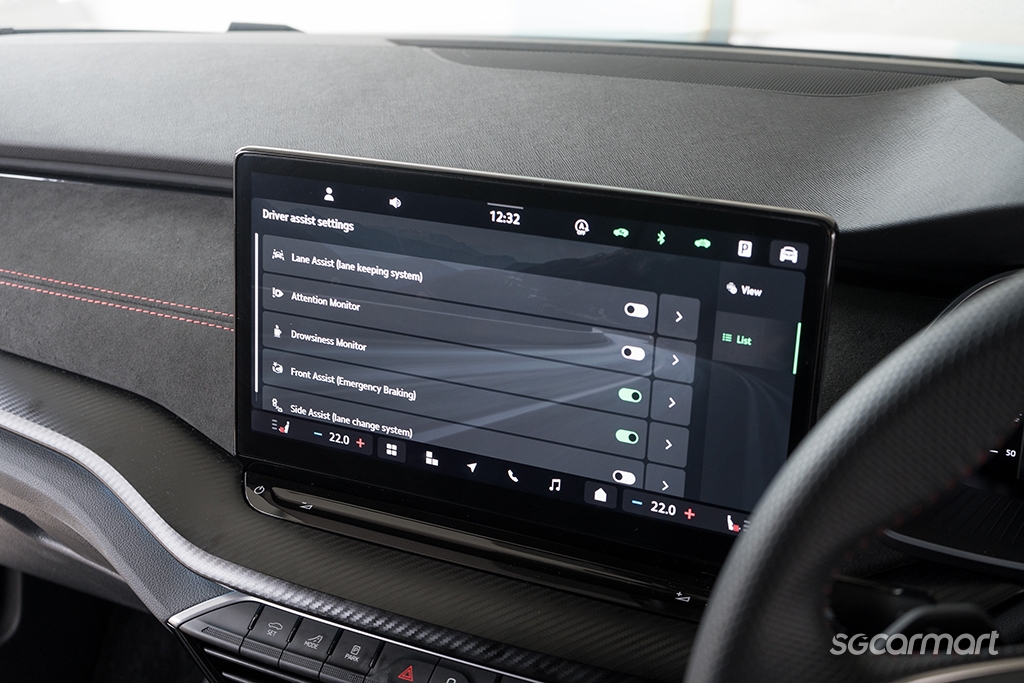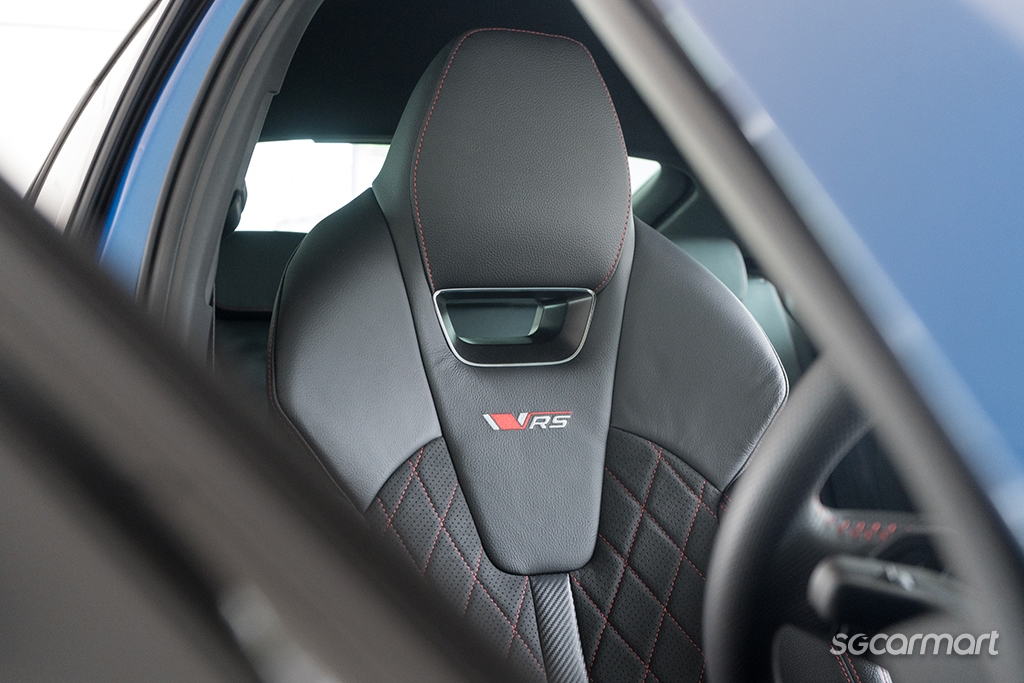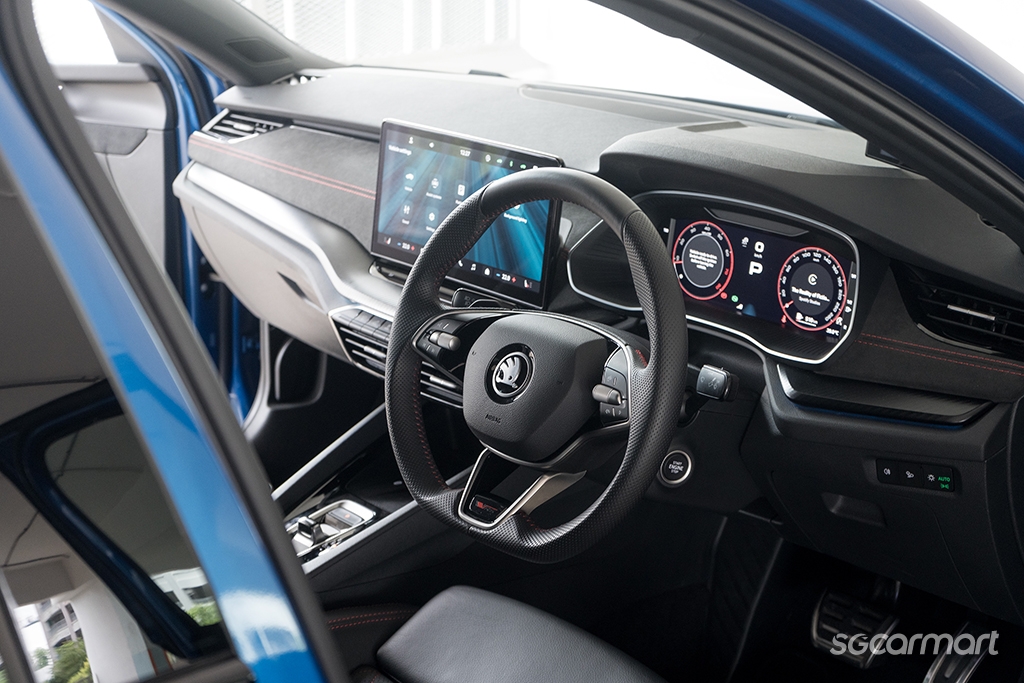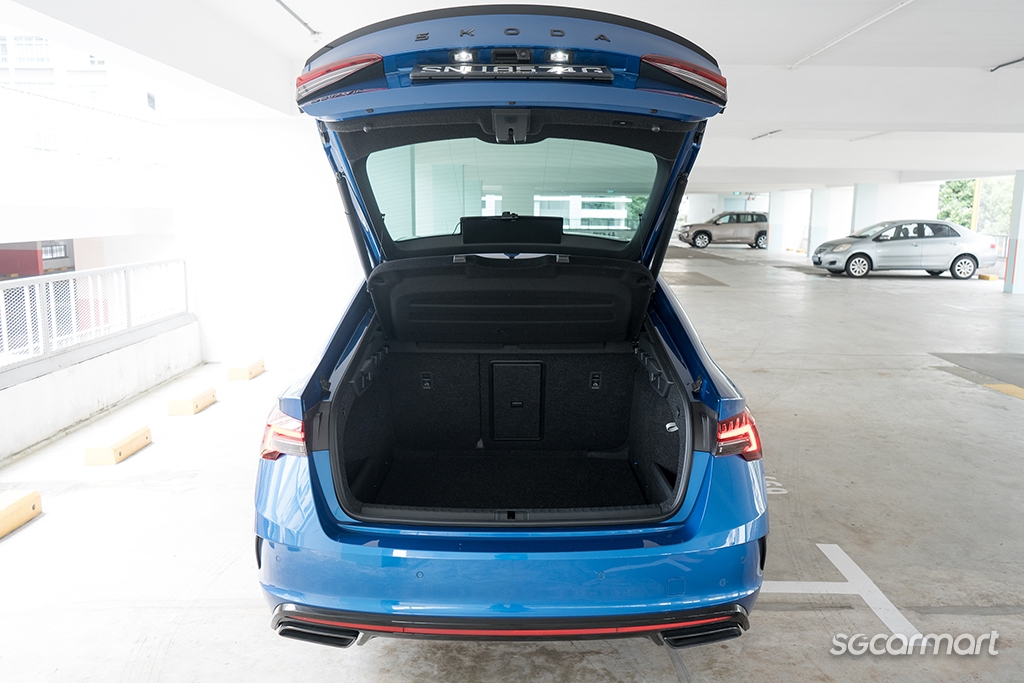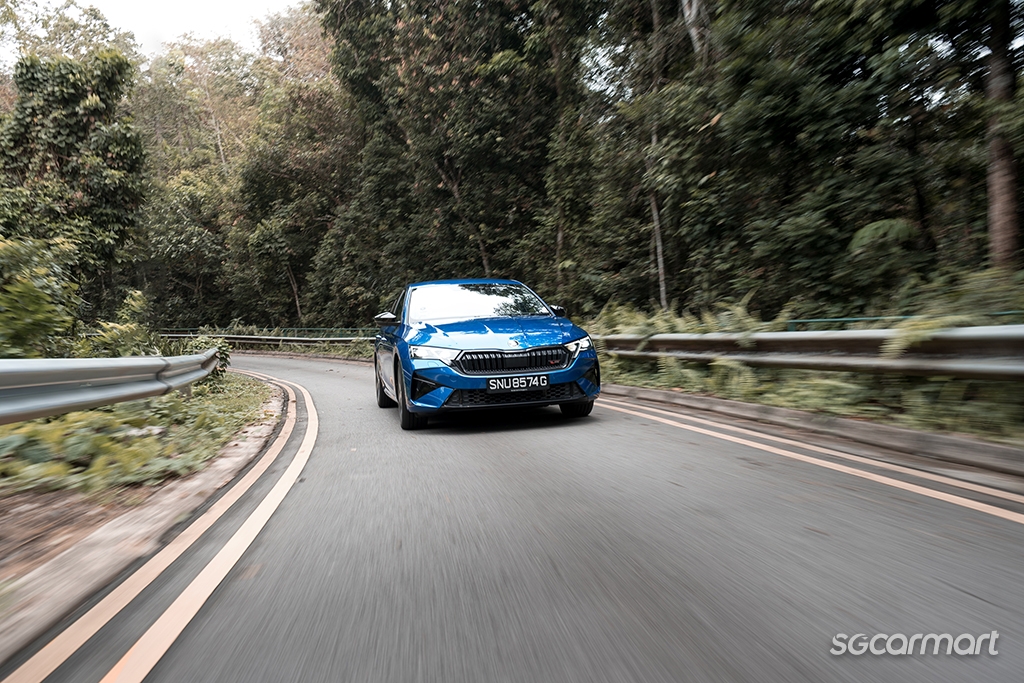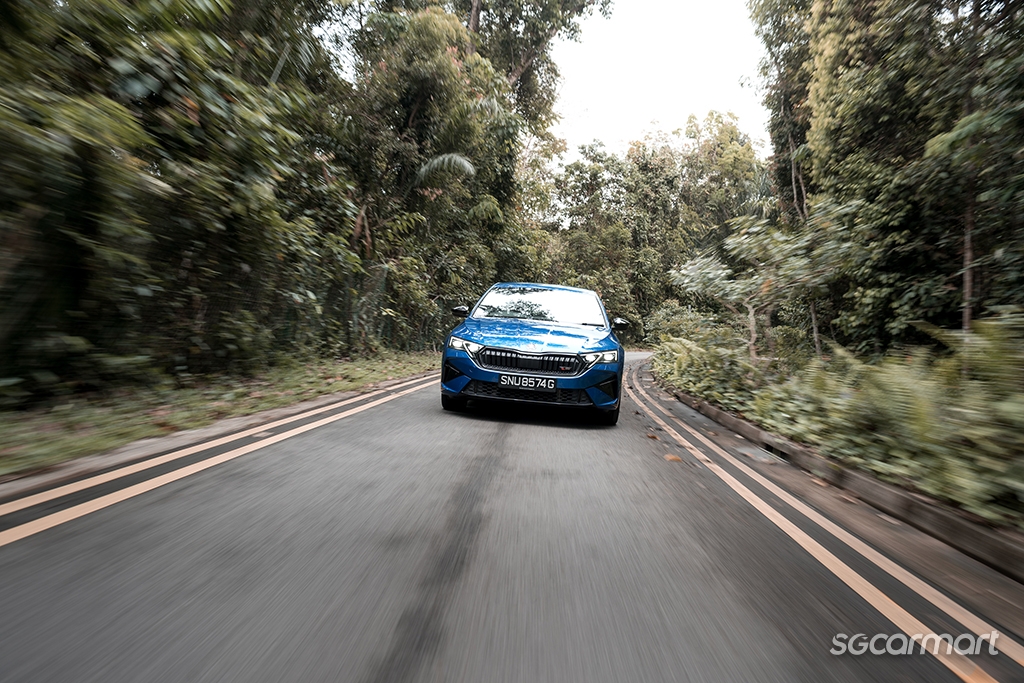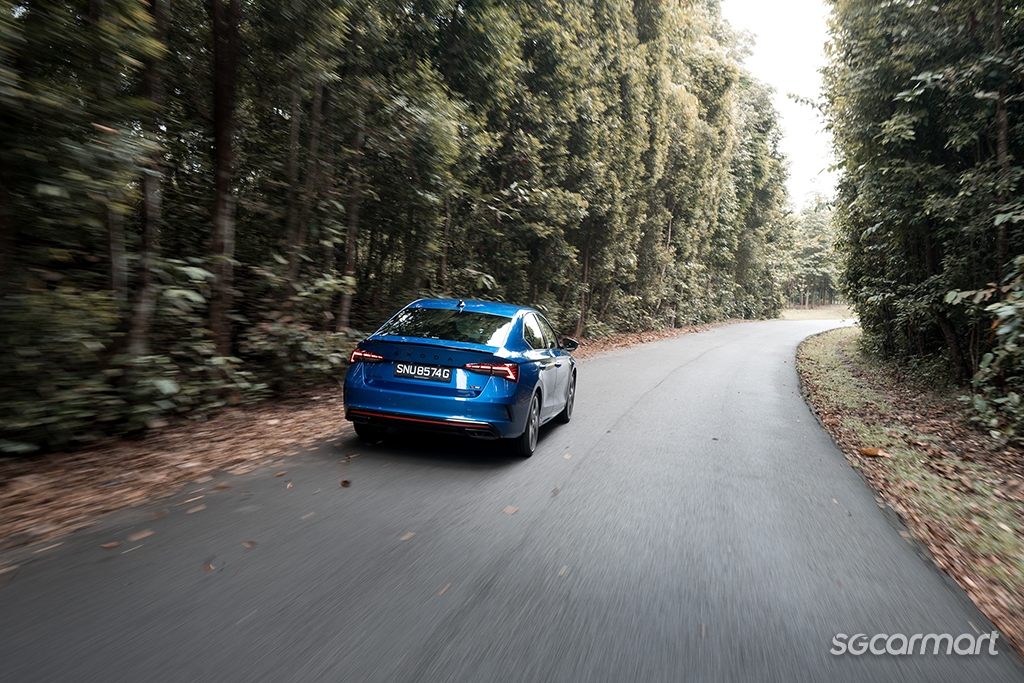Skoda Octavia RS Facelift Review
15 Apr 2025|4,343 views
Facelift (What's New)
Wider and slimmer grille
Reworked head and taillights
Larger 13-inch infotainment screen with updated interface
Performance increased to 261bhp and 370Nm of torque
Since it was first introduced on the first generation Skoda Octavia in 2001, the Octavia RS has earned a reputation for being something of a value-performance hero.
Yes, it may not be the fastest or sharpest driving car in its category, but the Octavia RS manages to deliver a compelling blend of performance and practicality, and typically at a more financially-accessible price point as well.
Four generations and over 20 years on, the car has understandably evolved - bringing with it advances in performance, technology and design, all whilst still trying to tread that balance between performance and practicality.
The Mk4 model has received a facelift (we've reviewed both the Sedan and Combi variants), and expectedly the facelifted RS model is here as well.
Model-specific details like the blacked-out grille and RS badging mark this car out, but it otherwise retains its understated, sleeper performance car looks
Let's quickly run through some of the changes.
As you'd expect, many of the same changes found on the standard models are also found here. So, reworked head lights, a wider front grille, revised air intakes, slightly different wheels, but in all there's no major or outrageous changes.
Don't look too closely, and it could easily be mistaken for a typical family sedan (a win for the Octavia RS, I think).
The main update in the cabin is the upsized 13-inch infotainment screen; while more graphically pleasing, the menu density makes for less-than-intuitive operation of secondary functions
Inside, it's much of the same story. The cockpit as a whole feels quite similar from before, with the notable change being the larger infotainment screen.
The infotainment interface has also been updated. It is visually more pleasing, but I will note that the user experience can be tedious beyond the most obvious and often-used functions like air-conditioning. If you do need to change other secondary settings, there's a fair bit of menu diving required, and it's not exactly organised in the most intuitive way.
You'll also find a pair of RS-exclusive sport seats - I really do like the suedia material, and the seats are amply comfortable. The Sport steering wheel is also nice to handle, especially considering many steering wheels these days tend to be overly girthy (interestingly, it still has a third bottom 'spoke', in contrast to the steering wheel in the standard Octavia that is just 'two-spoke').
What hasn't changed is the undeniable practicality and functionality the Octavia RS provides. The huge 600-litre boot can be expanded to 1,555 litres. The rear bench is plenty spacious, though the middle passenger would need to keep their legs on either side of the storage bin atop the transmission tunnel (there is an AWD variant offered in other markets).
Again familiar is what you'd find under the bonnet - a turbocharged 2.0-litre engine that sends power to the front wheels. It's a very familiar powertrain (this EA888 engine that has seen ample use across the VW Group products began service in 2007, and while it has been evolved over time even this Evo4 unit is from 2022).
Power has been bumped up to 261bhp and 370Nm of torque, though I'm not convinced most drivers will tangibly feel the 20bhp increase. The car is nonetheless quick - 0-100km/h in 6.5 seconds makes this the most powerful Octavia ever, and when you put your foot down power comes generously. As far as performance goes, it checks all the necessary boxes - the engine is grunty throughout the rev range, and is happy to be worked hard.
The overall driving experience is recognisable and familiar. Driven lightly, it's a very accommodating cruiser on highways (while still overtaking with ease). Hustle it hard and it will comply, but it's still not the sharpest driving tool (it never was meant to be).
The steering ratio has been tweaked, and it does feel quicker now. I also found it to feel a tad too heavy vis-à-vis the car's performance, but that's also a matter of personal taste. But feed the car into a few corners and its performance DNA certainly comes through. It feels a little more responsive and eager than before.
The overall impression here is an ever-so-slight increase in mechanical polish.
In most ways, the facelifted Octavia RS feels incredibly familiar, and that's a good thing. It retains many of the qualities that made it popular, and although some of the updates (the infotainment UX immediately comes to mind) may not be as immediately successful, there's still lots to like about the car. It is still a broadly capable and accomplished sedan that finds a neat balance between performance and practicality, and it doesn't pretend to be something that it isn't.
But, and this might be a big but, the pricing might be a challenge. Right now, the Octavia RS is priced at $269,900. It's a big number, but in today's COE climate that number in isolation is somewhat to be expected. The OMV on this model is largely the same as the pre-facelift model, so it's not like the car itself became much more expensive. And for reference, the Golf GTI (a largely similar car) is now priced at $271,900, so that's kind of the money you are looking at for a performance car in this class.
And to be fair, the Octavia RS doesn't have many direct competitors beyond the GTI.
While undeniably capable its its breadth of ability, the Octavia RS now finds itself amidst a new wave of all-electric competition that further pushes it into its niche space
The challenge is that the automotive landscape has rapidly evolved in the past few years, especially with the exponential growth in the EV sector. And even if it has no explicit intention to, the Octavia RS must now contend against all these newer options, many of whom can deliver comparable (and in many cases even more) performance thanks to electrification.
The BYD Seal immediately comes to mind. $210,888 will get you a mid-spec Premium model with 308bhp, while the 523bhp Performance variant's $261,888 asking price is a hair under what the Octavia RS is asking for. There's also the Tesla Model 3 - $206,976 will get you a 279bhp model, while the range-topping Performance AWD is just $255,941, and packs 618bhp. 268bhp Polestar 2? $263,000. 321bhp Hyundai Ioniq 6? 270,800. An entry-level 3 Series (with admittedly quite a bit less power) starts at $281,888, so the Octavia RS also starts creeping into the premium segment price-wise.
And that just means that given this price climate, the performance-to-value proposition of the Octavia RS isn't quite as enticing as before.
As EVs become more mainstream, this further drives cars like the Octavia RS deeper into niche spaces. And that's unfortunate, because it's a very likeable and enjoyable car. You just have to really, really want a petrol-burning quite-quick very-practical family sedan to fork out the money for one. Or maybe have the Combi RS instead.
Here are other brisk, petrol-powered compact sedans to consider:
Facelift (What's New)
Wider and slimmer grille
Reworked head and taillights
Larger 13-inch infotainment screen with updated interface
Performance increased to 261bhp and 370Nm of torque
Since it was first introduced on the first generation Skoda Octavia in 2001, the Octavia RS has earned a reputation for being something of a value-performance hero.
Yes, it may not be the fastest or sharpest driving car in its category, but the Octavia RS manages to deliver a compelling blend of performance and practicality, and typically at a more financially-accessible price point as well.
Four generations and over 20 years on, the car has understandably evolved - bringing with it advances in performance, technology and design, all whilst still trying to tread that balance between performance and practicality.
The Mk4 model has received a facelift (we've reviewed both the Sedan and Combi variants), and expectedly the facelifted RS model is here as well.
Model-specific details like the blacked-out grille and RS badging mark this car out, but it otherwise retains its understated, sleeper performance car looks
Let's quickly run through some of the changes.
As you'd expect, many of the same changes found on the standard models are also found here. So, reworked head lights, a wider front grille, revised air intakes, slightly different wheels, but in all there's no major or outrageous changes.
Don't look too closely, and it could easily be mistaken for a typical family sedan (a win for the Octavia RS, I think).
The main update in the cabin is the upsized 13-inch infotainment screen; while more graphically pleasing, the menu density makes for less-than-intuitive operation of secondary functions
Inside, it's much of the same story. The cockpit as a whole feels quite similar from before, with the notable change being the larger infotainment screen.
The infotainment interface has also been updated. It is visually more pleasing, but I will note that the user experience can be tedious beyond the most obvious and often-used functions like air-conditioning. If you do need to change other secondary settings, there's a fair bit of menu diving required, and it's not exactly organised in the most intuitive way.
You'll also find a pair of RS-exclusive sport seats - I really do like the suedia material, and the seats are amply comfortable. The Sport steering wheel is also nice to handle, especially considering many steering wheels these days tend to be overly girthy (interestingly, it still has a third bottom 'spoke', in contrast to the steering wheel in the standard Octavia that is just 'two-spoke').
What hasn't changed is the undeniable practicality and functionality the Octavia RS provides. The huge 600-litre boot can be expanded to 1,555 litres. The rear bench is plenty spacious, though the middle passenger would need to keep their legs on either side of the storage bin atop the transmission tunnel (there is an AWD variant offered in other markets).
Again familiar is what you'd find under the bonnet - a turbocharged 2.0-litre engine that sends power to the front wheels. It's a very familiar powertrain (this EA888 engine that has seen ample use across the VW Group products began service in 2007, and while it has been evolved over time even this Evo4 unit is from 2022).
Power has been bumped up to 261bhp and 370Nm of torque, though I'm not convinced most drivers will tangibly feel the 20bhp increase. The car is nonetheless quick - 0-100km/h in 6.5 seconds makes this the most powerful Octavia ever, and when you put your foot down power comes generously. As far as performance goes, it checks all the necessary boxes - the engine is grunty throughout the rev range, and is happy to be worked hard.
The overall driving experience is recognisable and familiar. Driven lightly, it's a very accommodating cruiser on highways (while still overtaking with ease). Hustle it hard and it will comply, but it's still not the sharpest driving tool (it never was meant to be).
The steering ratio has been tweaked, and it does feel quicker now. I also found it to feel a tad too heavy vis-à-vis the car's performance, but that's also a matter of personal taste. But feed the car into a few corners and its performance DNA certainly comes through. It feels a little more responsive and eager than before.
The overall impression here is an ever-so-slight increase in mechanical polish.
In most ways, the facelifted Octavia RS feels incredibly familiar, and that's a good thing. It retains many of the qualities that made it popular, and although some of the updates (the infotainment UX immediately comes to mind) may not be as immediately successful, there's still lots to like about the car. It is still a broadly capable and accomplished sedan that finds a neat balance between performance and practicality, and it doesn't pretend to be something that it isn't.
But, and this might be a big but, the pricing might be a challenge. Right now, the Octavia RS is priced at $269,900. It's a big number, but in today's COE climate that number in isolation is somewhat to be expected. The OMV on this model is largely the same as the pre-facelift model, so it's not like the car itself became much more expensive. And for reference, the Golf GTI (a largely similar car) is now priced at $271,900, so that's kind of the money you are looking at for a performance car in this class.
And to be fair, the Octavia RS doesn't have many direct competitors beyond the GTI.
While undeniably capable its its breadth of ability, the Octavia RS now finds itself amidst a new wave of all-electric competition that further pushes it into its niche space
The challenge is that the automotive landscape has rapidly evolved in the past few years, especially with the exponential growth in the EV sector. And even if it has no explicit intention to, the Octavia RS must now contend against all these newer options, many of whom can deliver comparable (and in many cases even more) performance thanks to electrification.
The BYD Seal immediately comes to mind. $210,888 will get you a mid-spec Premium model with 308bhp, while the 523bhp Performance variant's $261,888 asking price is a hair under what the Octavia RS is asking for. There's also the Tesla Model 3 - $206,976 will get you a 279bhp model, while the range-topping Performance AWD is just $255,941, and packs 618bhp. 268bhp Polestar 2? $263,000. 321bhp Hyundai Ioniq 6? 270,800. An entry-level 3 Series (with admittedly quite a bit less power) starts at $281,888, so the Octavia RS also starts creeping into the premium segment price-wise.
And that just means that given this price climate, the performance-to-value proposition of the Octavia RS isn't quite as enticing as before.
As EVs become more mainstream, this further drives cars like the Octavia RS deeper into niche spaces. And that's unfortunate, because it's a very likeable and enjoyable car. You just have to really, really want a petrol-burning quite-quick very-practical family sedan to fork out the money for one. Or maybe have the Combi RS instead.
Here are other brisk, petrol-powered compact sedans to consider:
Car Information
Skoda Octavia RS 2.0 TSI (A)
$284,900
CAT B|Petrol|12.8km/L
Horsepower
198kW (265 bhp)
Torque
370 Nm
Acceleration
6.5sec (0-100km /hr)
Thank You For Your Subscription.
- Updated Details
- Better Performance
- More Challengers












































